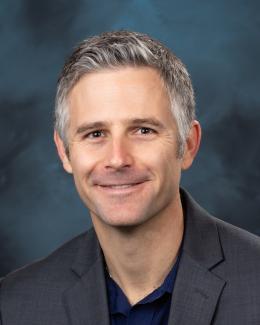
Radioactive isotopes power some of NASA’s best-known spacecraft. But predicting how radiation emitted from these isotopes might affect nearby materials is tricky, making it important to design innovative tools that can help employ nuclear materials in the most efficient way.
To help solve this problem, Michael Smith – a nuclear space systems engineer at the Department of Energy’s Oak Ridge National Laboratory – developed a computer program for simulating how radiation fields emitted from radioisotopes will interact with their surroundings. The program, called the Radioisotope Power System Dose Estimation Tool, or RPS-DET, can also simulate how radiation fields might be affected by different spacecraft materials. Plus, it accounts for different environments such as deep space, planetary atmospheres and gas giant moons. This information allows researchers to investigate vehicle designs for specific missions that can harness the full power of nuclear material without compromising the safety of crew members or equipment.
“Radioisotope power systems provide constant, durable power, which makes them ideal for space travel. But we have to be sure that the radiation emitted from the isotopes fueling these systems doesn’t interfere with other important equipment or pose a hazard to people,” said Smith, who works in ORNL’s Nuclear Science and Engineering Directorate.
Smith explains that the systems are relatively simple. A thermoelectric generator is made of material that harnesses heat from a nearby isotope and converts it into electricity, providing spacecraft with a reliable source of energy during its mission. The Mars Curiosity rover, many of the Apollo missions, and both Voyager probes all used radioisotope power systems to fuel their missions across – and even beyond – our solar system.
“Radioisotope power systems don’t have moving parts that can be damaged during take-off or reentry. They’re rocket-proof, so to speak, and it’s hard to think of another system so well-suited for powering spacecraft,” Smith said.
Radioisotopes decay over time, and that changes the radiation intensities they produce. Plus, radiation fields from nuclear fuels are affected differently by varying environments. Fresh fuel in a storage container on its way to Kennedy Space Center will present a different radiation field than fuel that’s a hundred years old on the surface of Mars.
“Radioactive isotopes also produce daughter products as they decay, which alters the radiation emitted by this fuel. What would that look like on, say, one of Jupiter’s moons? Or on our moon? Or on the surface of Mars? Engineers have to investigate questions like this when designing spacecraft,” said Smith.
RPS-DET allows researchers to do just that. The program features a catalogue of analytical nuclear engineering tools that scientists and engineers can access using SCALE, a software suite developed at ORNL specifically for simulating nuclear technologies. While SCALE provides users with a general computational framework for simulating various nuclear scenarios, RPS-DET gives users access to a pre-built database of models they can evaluate with SCALE for simulating specific RPS, operational environments, compositions of fuel and ages of fuel relevant to RPS-enabled spaceflight scenarios.
“If you’re wanting to design a rover, for example, RPS-DET lets you build a SCALE simulation to represent whatever extra-terrestrial landscape you want to send that vehicle to. You get to see firsthand how radioactive isotopes in different stages of decay might interact with your machine in these environments,” Smith said.
As NASA and independent companies continue to develop the next generation of spacecraft, Smith hopes RPS-DET will provide other researchers with a more efficient way to study and optimize machines fueled by RPS.
“We’re working hard to explore some of the most remote places in our solar system, and my goal for this tool is to make it easier for analysts to study nuclear phenomena associated with radioisotope power systems and to help them accomplish their missions,” said Smith.
The development of RPS-DET is supported by the National Aeronautics and Space Administration, in partnership with DOE’s Office of Nuclear Energy.
UT-Battelle manages ORNL for DOE’s Office of Science. The Office of Science is the single largest supporter of basic research in the physical sciences in the United States, and is working to address some of the most pressing challenges of our time. For more information, please visit energy.gov/science. – Gage Taylor


